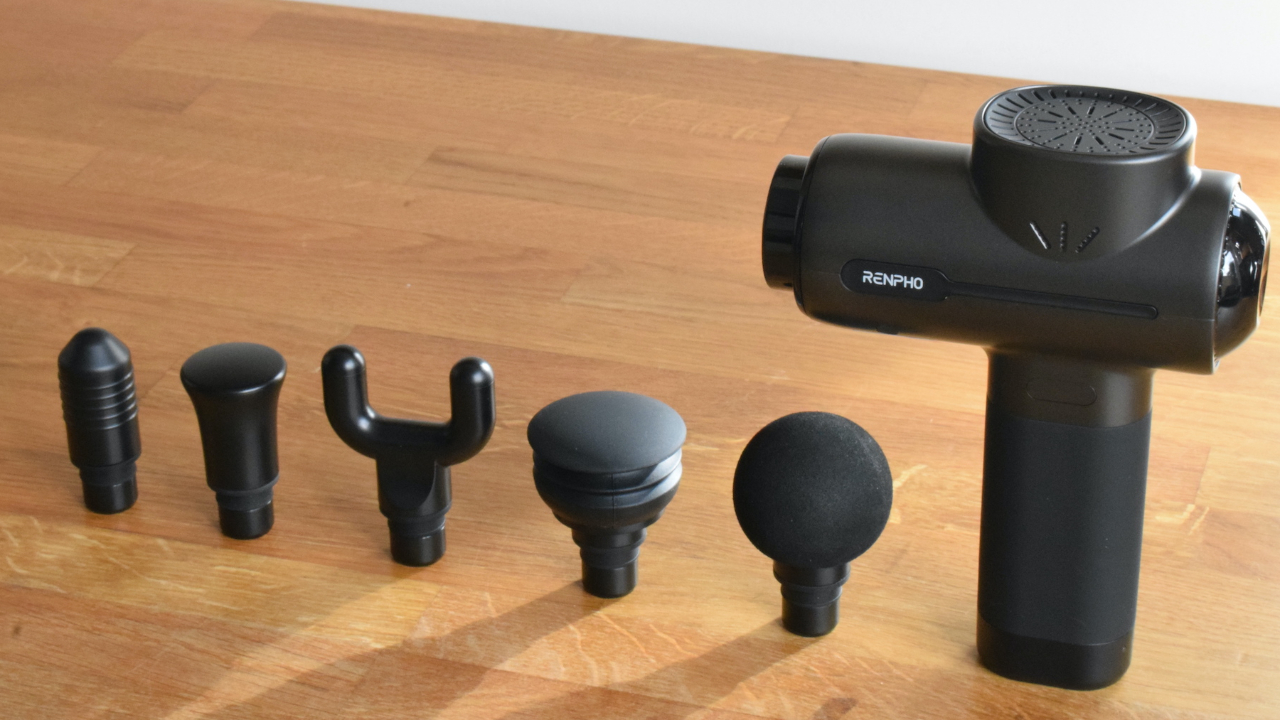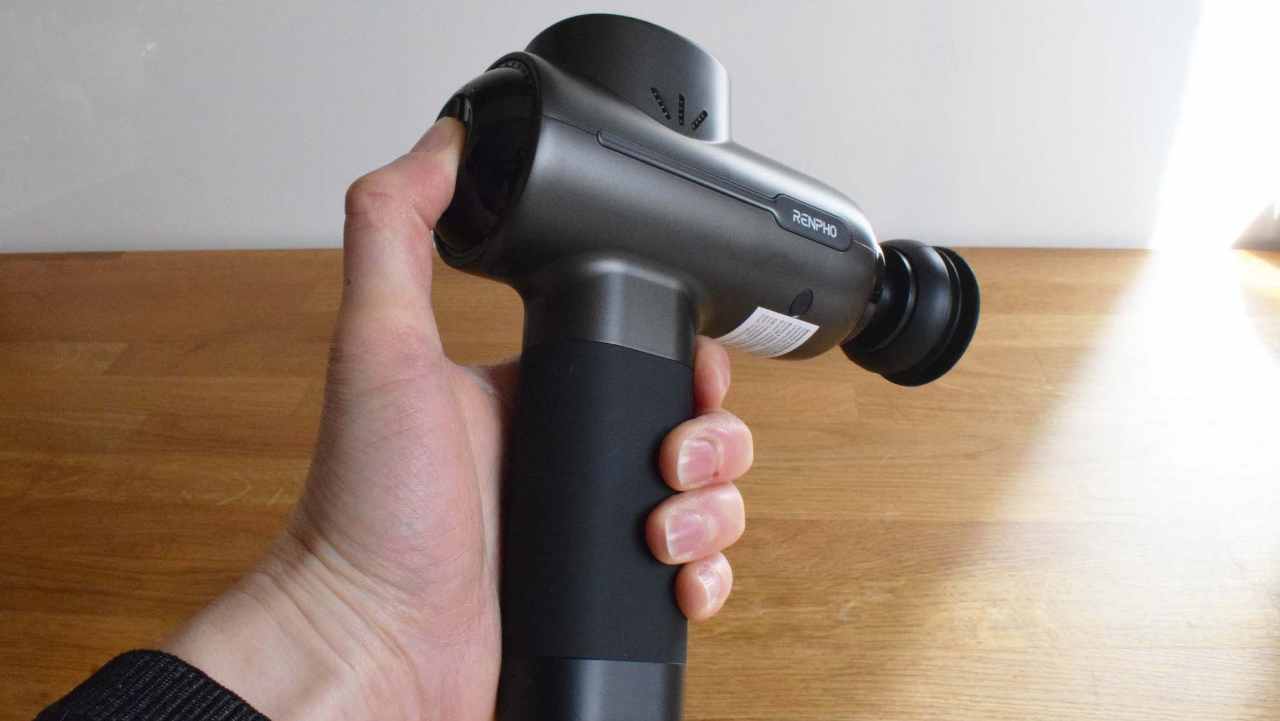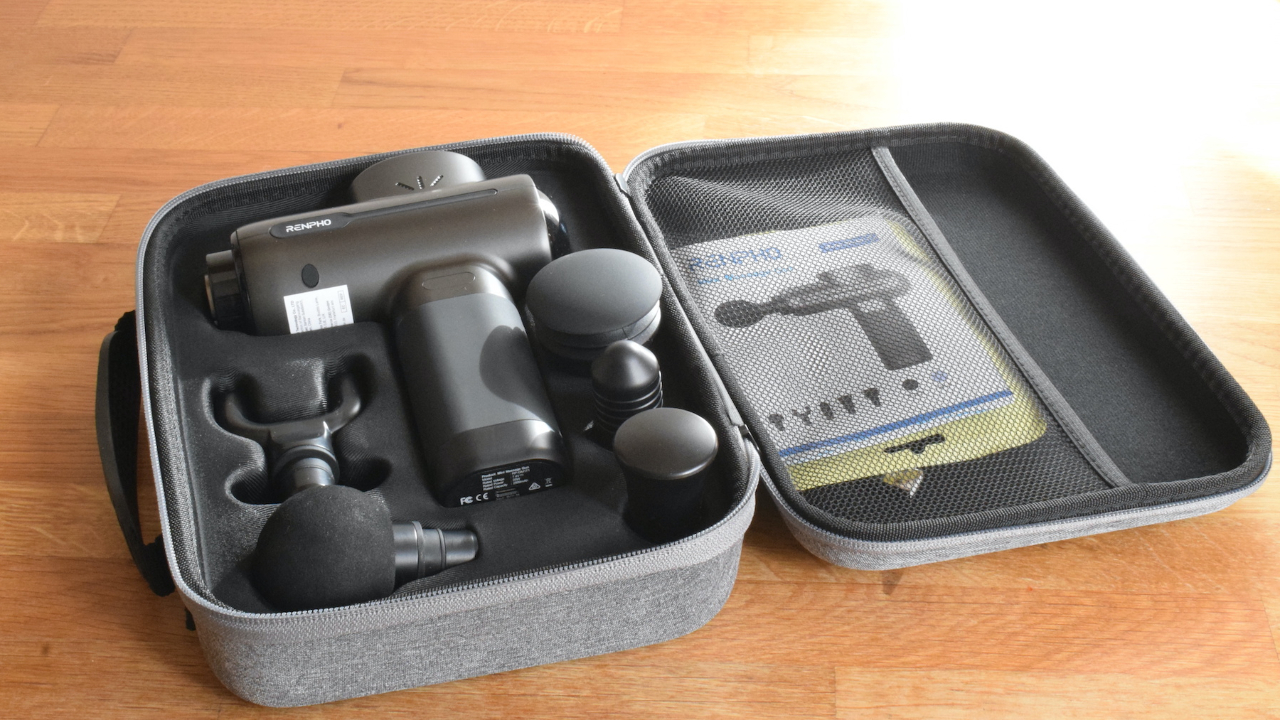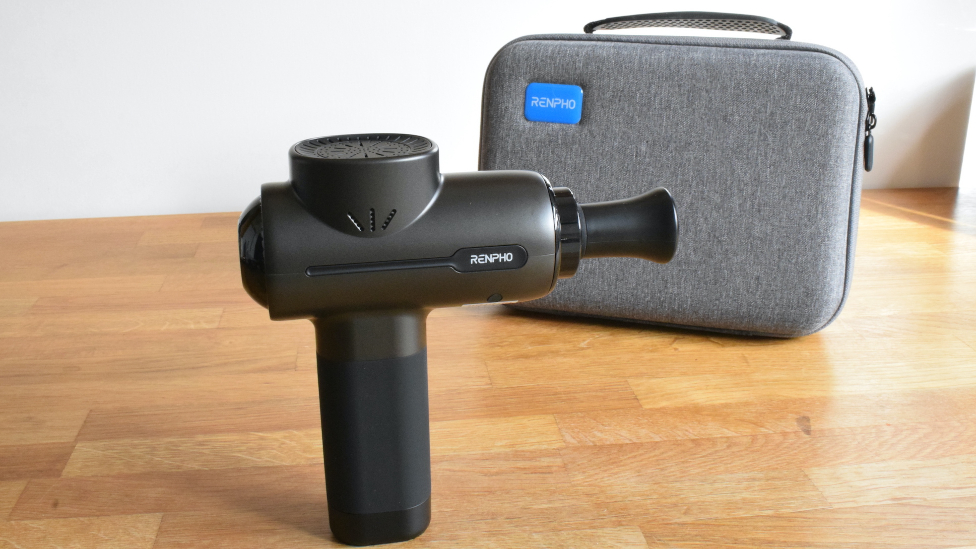Our Verdict
Renpho’s top-end massage gun is light, easy to operate and beginner-friendly for everyday use, yet it lacks a compatible app for guided routines.
For
- Beginner-friendly
- Compact and portable
- Easy to handle
- Long-lasting battery
- Broad range of speeds
Against
- Lacks power for advanced gym-goers
- Inferior head attachments
- No compatible app for guided massage
You can trust Coach
Renpho may not be a well-known brand in the world of percussion therapy, but it has ambitions to join the ranks of the best massage gun makers like Therabody and Hyperice.
Since the launch of its Smart Body Fat Scale in 2015, and one of our picks of the best smart scales, the US company has broadened its products to include the AI Smart Bike, the recently launched Smart Treadmill and a range of massaging devices designed for every body part.
It currently has four devices in its massage gun line-up, ranging from the Pocket Massage Gun (£79.99) to its top-end product, the R3 Mini Massage Gun (£104.99), which is on test here.
First impressions

When a massage gun can cost £549 (the sector-leading Theragun PRO) it’s hard not to be drawn to the R3 Mini’s price, and at just over £100 it sits at the more acceptable end of the category’s price range.
What’s notable is that the high-end Theragun PRO comes with five pre-set speeds ranging from 1,750 to 2,400 percussions per minute (PPM), yet the more-affordable Renpho R3 cranks that dial up to a max of 3,200ppm – and with its five settings starting at 1,800ppm.
The speeds in between, Renpho claims, are designed for fascia release, to help eliminate lactic acid and provide a deep-tissue massage – an impressive range for a massage gun at such an entry-level price point.
However, speed isn't everything. Therabody will argue that low-amplitude, high-velocity massagers can desensitise the skin without delivering deep targeted relief to the muscles, and the R3 doesn’t deliver the same force with each percussion as that of the leading devices on the market.
Notable Features
The R3’s impressive velocity – if not power – is delivered by a brushless motor that emits just 45 decibels (dB) of noise. By comparison, most dishwashers operate at 46bB-60dB, making the massage gun discreet enough for home or office use.
At 1.5lbs (680g) it is also lightweight, comfortable to use and, due to a well-positioned power button at the back of the device, a doddle to operate one-handed – a feature that’s surprisingly overlooked by several of Renpho’s competitors, among them Hyperice’s Hypervolt 2 Pro.

Firmly holding down the button starts the massage gun, with each tap cycling through its five speeds, which are indicated by small green LED lights. After 10 minutes it will automatically turn off. Four more lights at the base of the handle indicate how much life remains in the device’s rechargeable 2500mAh (milliampere/hour) lithium battery.
Renpho doesn’t stipulate exactly how long these batteries last, simply noting a single charge can power the gun for a week’s worth of use, and that the manufacturer of its power source previously equipped Tesla electric vehicles.
Added Extras
The Mini comes in a compact grey carry case, along with a convenient USB-C charger and five easily interchangeable head attachments. These include a hard ball attachment for large muscle groups, fork for the muscles running down the neck and spine, air cushion for sensitive spots, bullet for trigger points in the palms and soles of the feet and the flat head that’s intended to be suitable for all parts of the body.
Despite the options, after a few weeks of use I’m still unsure of the optimum massage gun head to use. The ball attachment feels too light and fragile to transfer power from the gun into the muscles and the flat plastic head has no give.
It might seem a small issue, but the tactility of the attachment is crucial for effective use and Renpho’s heads are a step down from those used by the likes of Therabody and Hyperice.

Verdict
Despite my apparent attachment issues, I gradually settled on using the air cushion head when working from home and found it an effective remedy to ease tension that would build up in my lower back and shoulders.
The R3’s desk-friendly dimensions and relative quietness – compared with models such as the Theragun Mini that tends to rattle at high speed – make it equally suitable for office use.
One oversight, however, is that of a compatible Bluetooth-enabled app. Therabody and Hyperice have recognised that their hardware is only as good as the software that accompanies it, and each offers an app to help users make the most of their recovery devices.
Were Renpho to offer a comparable tool it would elevate the R3 Mini from its current position as a cost-effective entry-level massage gun into one that would compete with the best in the business.
Buy from Renpho | £104.99

Sam Rider is an experienced freelance journalist, specialising in health, fitness and wellness. For over a decade he's reported on Olympic Games, CrossFit Games and World Cups, and quizzed luminaries of elite sport, nutrition and strength and conditioning. Sam is also a REPS level 3 qualified personal trainer, online coach and founder of Your Daily Fix. Sam is also Coach’s designated reviewer of massage guns and fitness mirrors.

